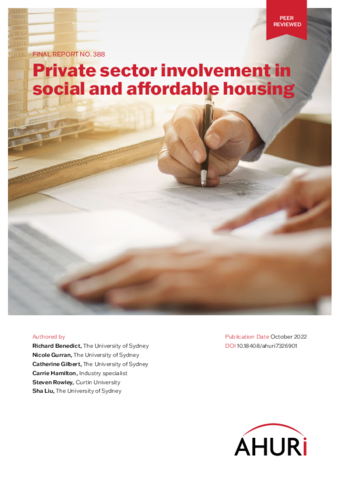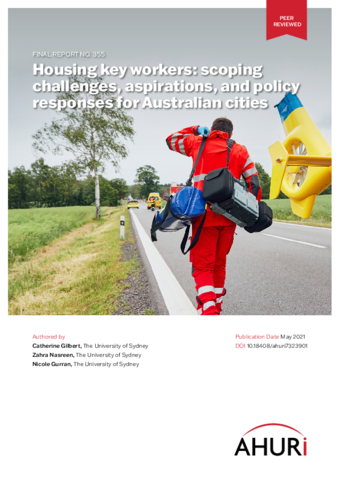Inclusionary zoning is a land use planning intervention by government that either mandates or creates incentives so that a proportion of a residential development includes a number of social or affordable housing dwellings.
The benefits of inclusionary zoning include supporting the development of affordable and social housing in good locations, and ensures presence of essential and key workers on lower incomes in places where property prices and rents might be otherwise prohibitive.
Types of Inclusionary zoning
There are two main approaches to building affordable housing through inclusionary zoning.
The first is the mandatory model which requires that a number of affordable homes are included in developments as a condition of planning approval. The number of potential affordable homes developers are obliged to build is determined by either negotiated agreements made between a developer and planning authority during the planning assessment process, or fixed requirements specified as a proportion of housing or development value.
The second approach is the voluntary incentive model, where new affordable housing is encouraged by reducing costs for developers. Types of incentives include:
- modifying planning standards based on performance criteria—for example, increasing site yield to encourage low cost housing like boarding houses, student accommodation, and retirement villages in designated areas
- bonus systems which relax specified development controls, typically height, density, setback or parking controls, in exchange for constructing dedicated affordable housing
- planning process incentives where projects that include affordable housing attract special treatment in the planning process such as fast track approvals, reduction, exemption, or refund of application fees, infrastructure charges or rates.
AHURI research identifies that developments ‘often contain a mix of mandatory requirements and incentives which can help offset the cost of affordable housing’, and that ‘(i)n the US, where inclusionary planning approaches are well established, … affordable units delivered through inclusionary planning approaches account for about 9 per cent of housing units permitted in applicable jurisdictions each year.’
Use in Australia
Inclusionary zoning has been implemented in varying capacities, in particular in South Australia and New South Wales.
The Housing Plan for South Australia, introduced in 2005, mandates that 15 per cent of new dwellings in all significant development projects be affordable, including at least 5 per cent for high-needs groups. Initially, the affordable housing requirement was applied to government land releases on the urban fringe; however, the policy is now being applied to urban renewal sites. Over the 10 years to 2015, mandated inclusionary zoning in South Australia delivered 5,485 affordable homes, which accounted for around 17 per cent of new supply in major residential projects. The majority of these homes (63%) were built on government land, and/or supported by other government incentive or subsidy.
Voluntary planning incentives in NSW have delivered a smaller proportion of affordable homes (an estimated 0.5–1% of Sydney’s housing supply in the years 2009–2017). Only affordable rental dwellings can be built under the scheme, with dwellings being ‘affordable’ (offered at up to 80% of market rent or at 30% of gross household income) for 10 years.
Currently the City of Sydney has mandated an affordable housing component in specified zones through the City West Scheme where residential developers in Ultimo Pyrmont must ‘provide social housing at the rate of 0.8 per cent of total floorspace, while non-residential development attracts a contribution obligation of 1.1 per cent of floorspace’. The Scheme has delivered around 900 social housing units (by 2021) and targets delivering around 80 new units each year. In such development areas, developers either include affordable housing within developments or pay an affordable housing levy. Inclusionary zoning is anticipated to deliver 330 affordable units in the Green Square redevelopment area of central Sydney.
The ACT Government introduced its ACT Housing Strategy in 2018. While not strictly an inclusionary zoning scheme, it does require ‘dedicating 15 per cent of its annual Indicative Land Release Program to growing the supply of public, community and affordable home purchase homes. … it will look to increase the supply of affordable and social housing on privately leased land through incentives and, where appropriate, with planning controls.’
The Victorian Government is undertaking a pilot Inclusionary Housing program that will deliver a mix of social, affordable and market housing dwellings at six sites. Another example is the City of Yarra’s Social and Affordable Housing Strategy ‘that aims to deliver affordable housing for low to middle-income workers through inclusionary zoning on new developments.’
Developers are sympathetic to inclusionary zoning
Recent AHURI research into private sector investment into social and affordable housing found that developers were sympathetic to mandatory inclusionary zoning schemes, such as those used in South Australia, which were ‘seen to provide a fair and level playing field. As a mandatory policy, there is certainty around requirements, making it easier to assess project feasibility.’ Indeed, developers said that ‘mandatory inclusionary requirements for affordable housing inclusion as part of new developments should be more widespread, particularly in high value markets.’
International examples of inclusionary zoning
In the UK there is ‘a long established inclusionary planning system (Section 106 agreements) that requires private developers to include social and affordable housing in their projects’. As developers are aware of the S106 requirements, all the inclusionary zoning costs are taken into account when initially buying land.
As a result of S106, just on 26,000 affordable homes (ref. Live table 1000C) —ranging from social rent properties to dwellings bought using shared and affordable ownership models—were completed in 2021–2022. These ‘S106’ homes accounted for 44 per cent of all 59,000 affordable homes built that year in the UK.
In New York (USA), mandatory inclusionary housing (MIH) laws (enacted in 2016) require that ‘20-30 per cent of residential floor area in new developments, enlargements, and conversions to residential use above 10 units and 12,500 square feet must be permanently affordable for low- and moderate-income New Yorkers.’ The MIH units may be offered for rent or for sale.
Developers can also submit development applications under Voluntary Inclusionary Housing (VIH) rules which offer ‘an optional floor area bonus in exchange for the creation, rehabilitation, or preservation of permanently affordable housing for low-income households.’ VIH unit may also be for rental or for sale, and must be affordable to low income households earning up to 80 per cent of Area Median Income (AMI). Rents must be capped at 30 per cent of the local area’s 80 per cent of Area Median Income.



